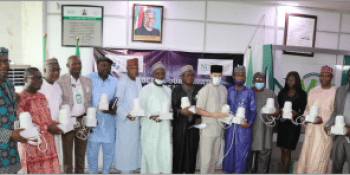Why mixed crop and livestock farming systems are central for future agriculture development

New Nature Climate Change perspective puts much needed focus on mixed crop-livestock farm systems under climate change across sub-Saharan Africa.
Mixed farm-systems, which include both crops and farm animals, hold up the world’s milk and food supply. In fact, mixed farms produce over 70% of the milk supply and 60% of the meat from ruminants globally, while providing incomes and livelihoods for millions of people in the tropics. In addition to providing food and income, farm animals often provide enriched fertilizer for the farm, support smallholders by pulling ploughs and help transport crops to the local market.
On a mixed crop-animal farm, the favor is usually returned as crops provide the animals with a critical source of feed in the form of stover, which is the leaves and stalks leftover after harvest.
Needless to say livestock is often the most important household asset and currently props up many of the world’s farming systems.
A recent perspective piece published in Nature Climate Change highlights the importance of these mixed-farm systems and their value to national development, farmers’ livelihoods and the globe’s food demand.
Authors Philip Thornton CCAFS Flagship Leader and ILRI resarcher and Mario Herrero based at the Commonwealth Scientific and Industrial Research Organisation (CSIRO) also note that the global community is underestimating the importance of livestock on farms in the developing world. This includes both underestimating the social and economic value as well as the importance of mixed-farm systems in supporting local climate adaptation, resilience building and greenhouse gas reductions.
Putting smallholders’ mixed-farm systems and their value at the centre for any cross-cutting climate and agriculture development projects is key.

Livestock plays a key role on most farms in Sub-Saharan Africa. Uncovering additional ways crops and farm animals can interplay for greater climate adaptation and mitigation is key, states new perspective piece. Photo: UNICEF Ethiopia
There are many ways where climate change adaptation and mitigation intersect when discussing mixed-farm activities. Livestock-crop mixed can help farmers become more resilient to changes in the climate because intermingling crops with livestock production often leads to a more efficient use of natural resources. Also, livestock can provide a buffer against losses in a particular season. For example, selling a few sheep or goats can help a family overcome a poor grain harvest.
The perspective highlights the critical need to address livestock’s contribution to climate change while also ensuring smallholders are supported as temperatures rise and the rainfall gets increasingly erratic. This is done through more concerted efforts to outline what climate change will mean for mixed crop-livestock systems and in particular livestock as little is currently known about long-term climate impacts on cows, goats and poultry.
There's also a need to learn more about the interactions between crops and livestock, and how these interactions can contribute to environmentally sustainable intensification, and better risk management through for example greater diversification.
There is relatively little information on how these interactions may be affected by changes in climate and climate variability. This is a serious gap, because these interactions may offer some buffering capacity to help smallholders adapt to climate change.
Download article: Adapting to climate change in the mixed crop and livestock farming systems in sub-Saharan Africa. By Philip Thornton and Mario Herrero. 2015 Nature Climate Change (Limited Access).
Read an opinion-piece by Philip Thornton: Why farms of the future need to mix livestock and crops. (Published in Devex)
On International Livestock Research Institute (ILRI) blog: Mixing it up—The information ‘black hole’ on crop+animal recipes for climate-smart and climate-resilient farms. Written by Philip Thornton.
Philip Thornton is a Flagship Leader at the CGIAR Research Program on Climate Change, Agriculture and Food Security (CCAFS) policies and institution research and principal scientist at the International Livestock Research Institute (ILRI). Mario Herrero works as Chief Research Scientist and Office of the Chief Executive Science Leader in CSIRO's Agriculture Flagship.



